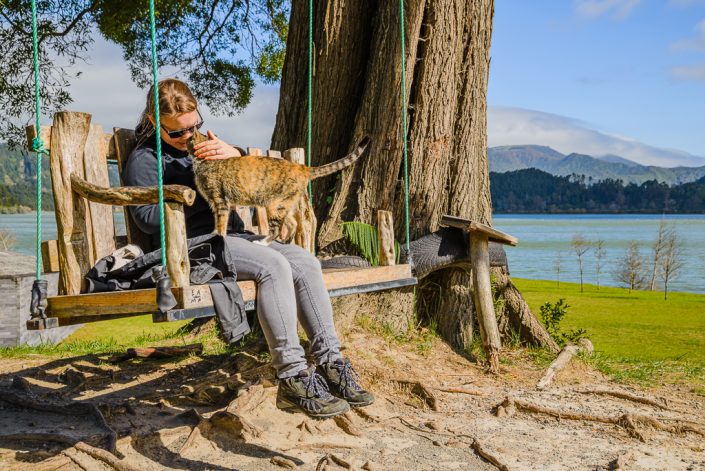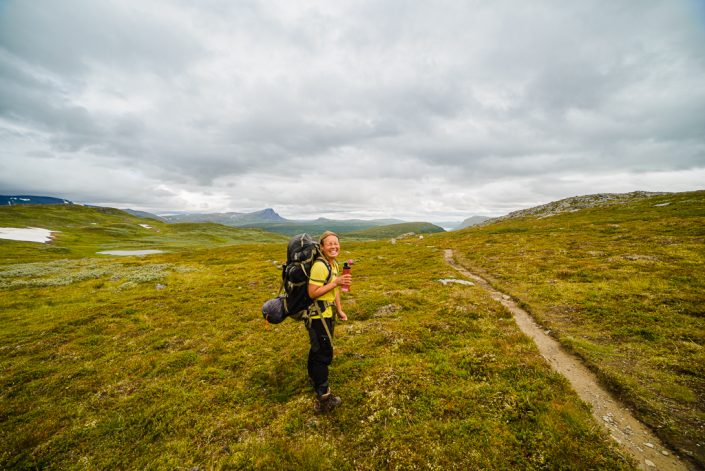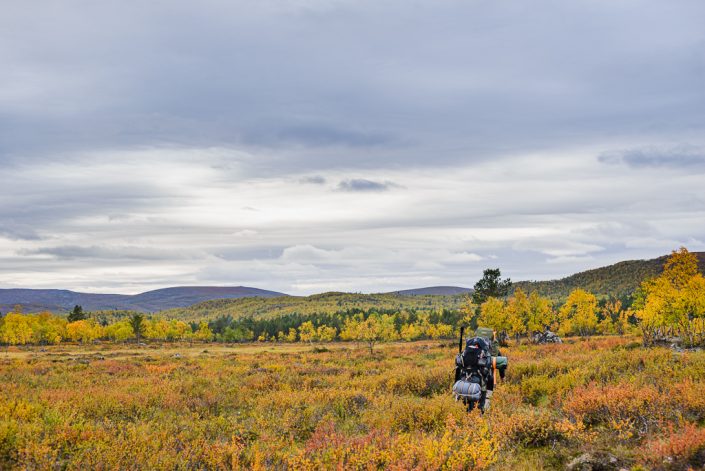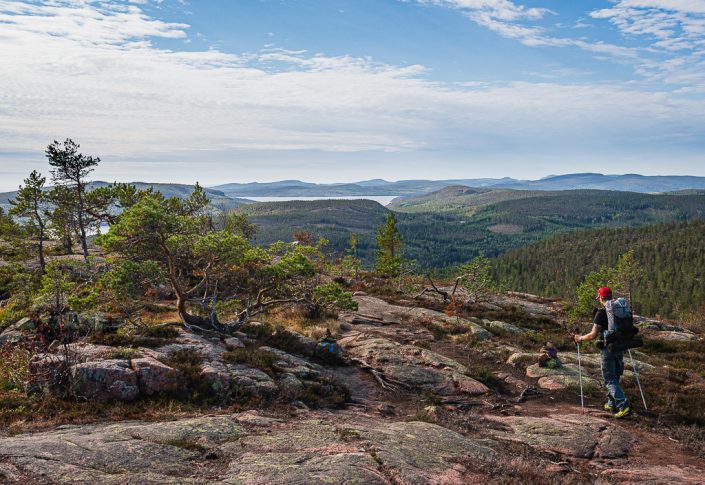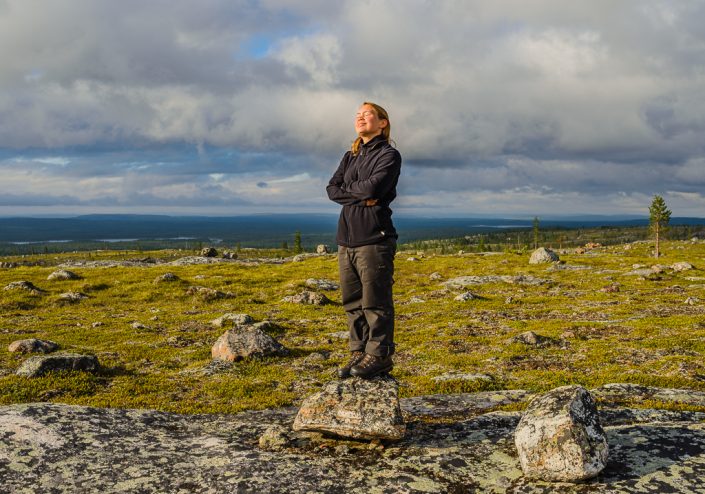

How to choose hiking and trekking boots
Especially a novice hiker will have a lot of trouble selecting their first hiking boots. In this guide we’ll look into the details of selecting the right boot. Remember to buy boots early so that you can break them in without hurry on shorter day trips and walks!
 Boots are one of the most important, if not the most important, pieces of gear when going on a hike. The right kind of footwear, correctly sized, makes it easy to enjoy the life outdoors.
Boots are one of the most important, if not the most important, pieces of gear when going on a hike. The right kind of footwear, correctly sized, makes it easy to enjoy the life outdoors.
It is important to pick the right size when selecting footwear. The right size means not only the length, but also the width of the boot. It is also a good idea to test the boots with socks similar in thickness to those that will be used during hiking.
The design of hiking boots varies, and if the boots feel a little off when fitted, they will probably feel uncomfortable in use as well. However, hiking boots do conform to the wearer’s feet to some extent, depending on the materials used, and become more flexible over time as they are used. Sturdy leather hiking boots will take a lot longer to break in than light cloth shoes.
Choosing hiking boots for day trips
On day trips, the choice of footwear is greatly influenced by the season, weather conditions and the destination of the trip. Waterproof boots are a good choice when walking on soggy ground or on trails with a lot of puddles. Even duckboards can be submerged under water during floods.
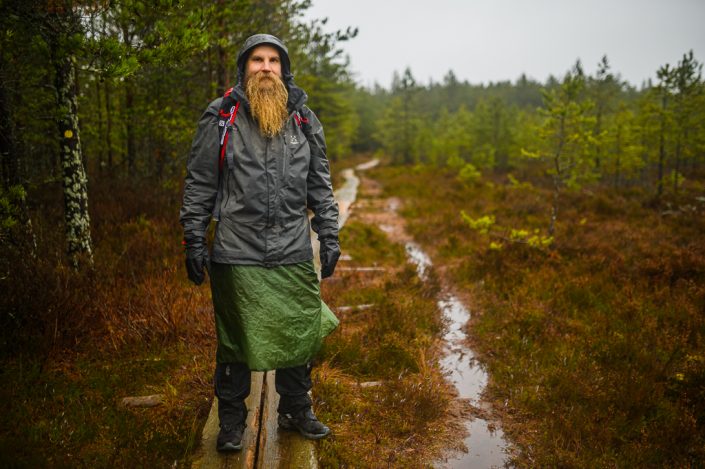 Mid-height waterproof hiking boots, gaiters, a rain skirt or pants, a waterproof shell jacket, and gloves, will keep you dry even in the worst of weather.
Mid-height waterproof hiking boots, gaiters, a rain skirt or pants, a waterproof shell jacket, and gloves, will keep you dry even in the worst of weather.
Mid height boots mean that the boot will have a bit of a collar, providing support to the ankle. It will also offer better protection from water in rainy and wet conditions. Gaiters can be fitted on top of the boot, providing protection from moisture coming off the undergrowth.
Some examples of Mid-height waterproof hiking boots for day trip use: Lowa Taurus II W GTX Mid, Hoka One One Sky Kaha GTX, Hoka One One Sky Kaha W GTX.
During warm weather a membrane-less trekking shoe breathes better than a waterproof boot. Light trekking shoes are a good choice for a daytrip. A light trekking shoe will provide protection and is comfortable to walk in, as it doesn’t stress the foot as much as a heavier boot. A lower cut shoe will also ventilate a little better than a tall boot.
Daytrips are good for taking your hiking boots out for a walk so that they don’t become brittle with age in the back of your closet. Leather hiking boots will also do the job during wet weather on a daytrip as long as you wax them well.
Some membrane-less shoes for those summer daytrips: Salomon Outline, Lowa Strato Evo LL Lo Women’s, Lowa Strato Evo LL Lo, Haglöfs Trail Fuse Women.
Shoes for city and travel
Trekking shoes are a good choice for travel and urban walks. Trekking shoes are a great choice if you like nature travel combined with urban exploring. If you travel to a location with a lot of rainfall you should choose waterproof shoes. If traveling to a warm place with a lot of sunshine a membrane-less, well ventilated shoe is the better choice.
Good shoes for city and travel: Lundhags Bjerg Mid ja Haglöfs Skuta -model range.
Boots for weekend trips and easy hikes
It is recommended to wear sturdier, more supporting shoes when carrying a backpack than when going without.
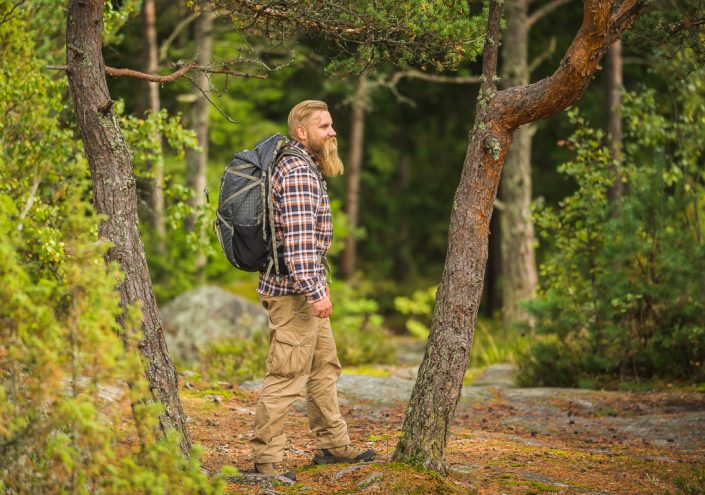 A lighter trekking shoe goes well with a lighter backpack. A sturdier pair of hiking boots might be a better choice if your backpack is very heavy.
A lighter trekking shoe goes well with a lighter backpack. A sturdier pair of hiking boots might be a better choice if your backpack is very heavy.
Footwear should be picked according to the season, weather, and terrain. However, if one were to pick a single pair for general use then trekking shoes or a lighter pair of hiking boots would be fine for an overnight trip and easier hikes.
Some examples from our selection of shoes for weekend trips and easier hikes: Lowa Renegade Mid GTX, Lowa Renegade GTX Mid Lady, Hanwag Banks SF Extra, Lowa Taurus II W GTX Mid, Lowa Innox Mid GTX Women’s, Lowa Innox Mid GTX.
Hiking boots recommended for hiking
If you are going on your first hike and are wondering what footwear you should pick, then a pair of hiking boots is the safest choice.
A hike is generally a trip that takes longer than a weekend, is undertaken using only your feet for transportation, and where everything you need, including shelter and food, is carried along on your back. The general recommendation is to pick your footwear according to the terrain, i.e. the rougher the terrain (rocks etc) the sturdier the boots.
Waterproof boots are generally a good choice when hiking along marked paths. This way you can cross small puddles and not get wet from damp undergrowth.
Some sturdy and waterproof hiking boots: Meindl Vakuum GTX, Meindl Kansas GTX Lady, Hanwag Tatra II Wide Lady GTX, Lowa Camino LL, Lowa Mauria LL Ws.
A lower cut shoe will inevitably get wet when you venture off the trail in the wilderness. The exception naturally being dry terrain during the dry season. In many places you’ll eventually run into swampy and wet terrain, and then a lower cut shoe will often take on water over the side. You can stop that from happening by using hiking boots with a higher cut.
Some higher cut hiking boots: Lundhags Jaure II MS LT High, Lundhags Mira II WS LT High, Lundhags Professional II High Regular.
It is really hard to dry waterproof hiking boots once they get wet. One way to approach this problem is to wear membraneless shoes, allowing them to get wet. You can for instance remove the insoles and put your socks in your pockets when wading a stream. Afterwards you can dry your shoes out for a while or put the waterproof boots on while your shoes are drying as you walk or rest at the campsite.
Membraneless hiking boots: Lundhags Vandra II Mid, Lowa Camino LL, Lowa Mauria LL Ws, Lundhags Bjerg Mid.
Experienced hikers and especially ultralight backpackers prefer wearing lighter shoes even in difficult terrain. Ultralight backpackers carry lighter backpacks and often have trekking poles. A light shoe allows for more agility when hopping from rock to rock. Lighter shoes do often have toe guards in case you happen to stub your toes on a rock.
Light trekking shoes with a waterproof membrane: Salomon XA Pro 3D v8 GTX Men, Salomon XA Pro 3D v8 GTX Women.
Membraneless shoes: Hoka Speedgoat.
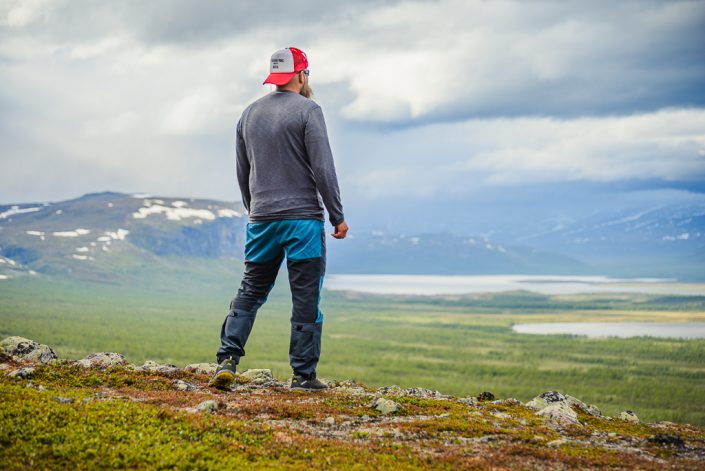 A light trekking shoe is nicer to wear at camp. Consider taking along light trail running shoes to wear as camp shoes, if you have enough space in your backpack.
A light trekking shoe is nicer to wear at camp. Consider taking along light trail running shoes to wear as camp shoes, if you have enough space in your backpack.
Ultralight backpackers usually use membraneless trail running shoes and let them get wet when crossing streams. You can take the shoes off when you stop for a rest, and let your feet breathe a for a while. You can change your wet socks to dry merino wool socks at the campsite. You can also put some waterproof socks on as well, such as SealSkinz or Bridgedale. This way you can walk around the campsite even in wet terrain without wetting your feet. Please note that if your feet remain wet for too long the skin can suffer, even leading to, in some extreme and rare cases, the so-called Trench Foot.
Other footwear tips
As with hiking and all outdoor activities in general, you should always consider the whole picture. Think of the kinds of treks and hikes you will be doing when selecting hiking or trekking boots. Should you purchase a single pair that is a good all-rounder? Or should you avoid compromise and buy a few pairs, one for every kind of activity and/or weather? A good pair of trekking shoes is good for almost anything, they can be worn on day trips or even on shorter hikes. On the other hand, if you invest in more pairs of shoes, they will wear out more slowly and last longer.
Even new hiking boots should be treated before use. Remember to clean and service your footwear regularly!
Read more:
How to take care of your hiking boots
Posted: 22.4.2020Modified: 23.1.2025

